Hyundai speaks fluently with new Accent
By John Gilbert
LAS VEGAS, Nev. — The latest new Hyundai appears certain to be a major sales success — with apologies to all if that sounds redundant.
The hits just keep on coming for Hyundai, and the 2012 subcompact Accent is just the latest offering to use up whatever superlatives remain. It is stylishly designed both as a sleeker sedan or the cargo-happier 5-door hatchback; it is lighter but stronger and therefore safer; it is peppy and fun to drive but extremely frugal, at over 40 miles per gallon; it goes better than most subcompacts because it’s the only one offering 6-speed transmissions in either stick or automatic; it stops far shorter than any other subcompact because it’s the only one with 4-wheel disc brakes; and it has enough interior room to qualify as a compact rather than subcompact by EPA rules.
And, oh yes, it can be bought for a base price of $12,445.
Although the base GLS sedan is surprisingly well equipped, you can jack up the price with all sorts of options and features you may not expect in a subcompact, all the way up to a loaded SE 5-door at $16,795. The sticker price, economy, content, and fun quotient — especially the 40 mpg and the sticker price — may make the Accent most deserving of accolades, even in Hyundai’s stable of over-achieving prize-winners.
It doesn’t matter what Hyundai does to expand its impressive portfolio of high-tech yet budget-friendly automobiles, every time there’s a model changeover, the South Korean company simply strikes again to raise the bar. If an analogy helps, think about watching 23-year-old Irishman Rory McIlroy play golf in the 2011U.S. Open: Every hole he played, he hit a near-perfect shot with great length, down the middle, then hit it up next to the hole, then sank the put for a birdie, or a par, but almost devoid of anything approaching a bogey. The next day, he did it again, shooting all four rounds with under-par scores in the 60s to completely outdistance the rest of the field of the best golfers in the world. McIlroy came out of nowhere to look like he might be the best golfer in the world, Tiger Whatsisname notwithstanding. In the automotive world, Hyundai is doing the same thing.
Two years ago, Hyundai introduced its Genesis luxury sedan, which captured the 2010 North American Car of the Year award, adding fame when its new 4.6-liter V8 was named to the select annual list of Ward’s top 10 engines of the world. Impressive, but as the Genesis smoothly crooned out classics, it was promptly upstaged when Hyundai turned the Sonata into an automotive rock star. The 2011 Sonata midsize sedan has it all, with solid build-quality from its new Montgomery, Ala., plant to go with flashy California design contours, a direct-injection upgrade to its 2.4-liter 4-cylinder engine, for the best power and fuel efficiency in its class, and a superb new Hyundai-built 6-speed automatic transmission — all for a bargain price. The American buying public took immediate notice, and In May of 2011, Sonata was the No. 1 car sold in the U.S., trailing only the perennial leading Ford F150 and Chevrolet Silverado pickup trucks.
When the Tucson compact SUV was renovated, nobody was surprised that it, too, was a major success from both design and performance standpoints, and it will become even better when the GDI version of its 2.4 is installed for the 2012 model year. Next came the new Elantra compact, which is sort of a downsized Sonata in styling, and hits a legitimate, real-world 40 miles per gallon from its new 1.8-liter “Nu” engine, while rising above the fierce competition by offering both a 6-speed manual and the slick 6-speed automatic. Hyundai officials point out that competitive makes that advertise 40 mpg charge extra for special effects to attain it, requiring the use of asterisks to disclose that all models don’t reach 40, while the Elantra achieves 40 with all models, stick or automatic. Hyundai also measured its competition and divulged statistics showing that all the other 40-mpg competitors combined sold 15,000 for January through May of 2011, a span when Hyundai sold 80,000 Elantras.
What could Hyundai have left to prove? If you must ask, make sure to speak with a distinct Accent.
The Accent has been a nice little bargain econocar, since before Hyundai’s meteoric surge upward in the last two years. As if to celebrate all the impressive and expensive tricks used in the other categories, Hyundai combined all of them to make sure the new Accent would jump to the head of its class. Such cars as the Toyota Yaris, Honda Fit, Ford Fiesta, Nissan Versa, Mazda2, and Chevrolet Sonic reside there, an affordable group with good mileage, which makes it logical that consumers are boosting subcompact segment projections upward by 33 percent this year. With fuel economy flirting with $4 per gallon, the majority of consumers now claim that fuel economy is No. 1 among criteria for selecting a subcompact.
Hyundai is perfectly positioning the Accent for that reality. After proving the value of direct injection with the Sonata, they were satisfied that the Elantra could reach 40 mpg without the costly direct-injection method of sending a totally-combustible mist into each cylinder. So the Elantra doesn’t use GDI (gas direct injection), but Hyundai took no chances with the Accent. It switched from a cast iron to an all-aluminum 1.6-liter Gamma engine, with gas direct injection, saving 40 pounds and increasing power by 25 percent. Building the new car with high-grade steel was another breakthrough. There are various grades of steel, and since Hyundai is the only auto company that owns its own steel plant, it has ready access. With high-grade steel, a manufacturer can make body panels and structural pillars thinner and yet stronger — and safer – compared to the same size car built of thicker but lower grade steel. The Accent uses 38 percent high-tensile steel, which is impressive; it also uses an additional 21 percent ultra-high grade steel. Those two high-grade levels total of 59 percent of the car, allowing the Accent’s body stiffness to improve by 22 percent over its predecessor, improving its safety characteristics significantly.
The Accent weighs 2,396 pounds as a 4-door sedan, and 2,430 in 5-door hatchback form, so the lighter 1.6 GDI Gamma engine’s 138 horsepower at 6,300 RPMs, and 123 foot-pounds of torque at 4,850 RPMs, are easily sufficient. Those 138/123 horsepower/torque figures compare with the Fiesta’s 120/112; the Mazda2’s 120/98; the 108/105 of the Chevy Aveo; 106/103 of the Yaris; 117/106 with the Fit; and 109/107 with the Versa.
Of all those competitors, only the Fiesta offers a 6-speed automatic, and none offers a manual with anything other than a 5-speed, making the Accent stand alone with the choice of a 6-speeds in either the stick or the impressive Hyundai-built automatic, with Shiftronic manual-shift mode. Figuring pounds per horsepower, the Fit is the best of the competitors, with 21.3 pounds per horsepower, while the Accent has a decisive edge with17.6 pounds per horsepower in the 5-door and 17.4 with the slightly lighter 4-door sedan.
The new Accent has an “Active Eco” switch that modifies engine and transmission control for up to 7 percent fuel economy improvement. The concerted focus — you should pardon the expression — attains a 40 mpg highway mileage rating that is an 18-percent improvement over the outgoing model’s very good 34 mpg. To reach it, the Accent combines the lighter engine for a 6.1 percent mileage improvement, electric steering for a 4.1 percent increase, an improved altenator management system for 2.7 percent, low rolling resistance silica tires for 2.1 percent, dropping the aerodynamic coefficient of drag from 0.31 to 0.30 for 2.1 percent, and using a 6-speed manual compared to the outgoing 5-speed for 1.0 percent. That adds up precisely to 18.1 percent.
In our preliminary test drive, we got well over the EPA’s 40 mpg, too. I was curious about Hyundai choosing to not put direct injection on the Elantra engine, but making sure to use it on the smaller Accent. Mike O’Brien, the chief engineer on the car, explained how the new aluminum engine has dual variable valve-timing, with a maintenance-free timing chain, and an offset crankshaft to nullify vibration, and electronic throttle control — all worthy upgrades for any engine. “But direct injection is the single biggest improvement possible to affect the fuel economy of a gasoline engine,” he said. “It all comes down to the detonation of fuel, and with direct injection we’re able to raise the compression ratio while keeping the fuel cool, improving the volumetric efficiency.
“The biggest challenge for us is that direct injection is comparatively costly, and we have to weight the obvious advantages against the cost. We decided to do it because we expect we could manage the cost, with component costs coming down.”
When we got the chance to drive the Accents out of Las Vegas and down to Hoover Dam, then back up through the surrounding hills to Loew’s resort, I picked out an SE model with a stick, to get the taste of the sportiest version. My codriver noticed how free of wind-noise the Accent was, and how comfortable the clutch engagement was. I drove later, and agreed completely, and I had the chance to drive much more aggressively on some curvier roads to higher elevation.
After such aggressive driving, I was impressed that the computer showed I had attained 39.5 miles per gallon, until my codriver informed me she had gotten 47.5 mpg. The Accent SE’s EPA estimates are for 30 city and 40 highway, so my 39.5 was right on it, impressive for how hard I drove, but her 47.5 proved that with only a bit mellower driving, the Accent would follow the normal Hyundai habit of exceeding its EPA figures with real-world facts. We can attribute the over-achieving to Hyundai’s GDI.
The roominess inside the Accent is created by optimum use of the slight enlargement, which is 3.5 inches longer with a 2.8 inch lengthening of the wheelbase. The 5-door hatchback cargo capacity measures 21.2 cubic feet, which ismore than larger-class vehicles such as the Infiniti EX35, Audi A3, Mazda3 5-door, or Subaru Impreza 5-door.
Styling of the Accent takes on the current Hyundai signature look of “fluidic sculpture,” featuring flowing lines that seem to be in motion even while parked. I like the sleekness of the sedan, but the hatchback has a sporty flair, especially with the little rear spoiler atop the hatch on the sportiest SE model. The interior layout is roomy, with a neatly arranged instrument panel and center console that house all the switchwork and gauges in placement that works for both ergonomic and aesthetic success. The seats are well-bolstered and comfortable, and the interior comes in a choice of beige, grey, or black. The lining of the interior strikes a new balance between the soft spongy stuff that beats the old hard and harsh plastic, by combining plastic, fibrous tissue, and volcanic rock. I never got the chance to ask a Hyundai executive about where, why and how volcanic rock worked its way into the equation.
The GLS, GS, and SE all are different, but Hyundai wisely limits the Accent to eight different orderable configurations. Others offer many more combinations, but Hyundai explained that having too many means customers have difficulty finding exactly what they want at dealerships. We later drove other models, to make sure the strong 6-speed automatic performed well, too. It didn’t seem much of a letdown, even though the SE has a sport-tuned suspension. Features, such as hill-start assist and electronic stability control, are obvious assets, as are the 4-wheel disc brakes, which stop the Accent with proper urgency.
Hyundai projects that the 5-door hatches and the 4-door sedans should split sales about 50-50, while stick-shift versions should account for 20 percent of Accent sales.
The SE we first drove had the model’s extended list of standard features, with electronic stability control, traction control, antilock brakes with electronic distribution and assist, air-filtration on the air conditioning, steering wheel remote controls, Bluetooth phone connectivity, power windows, mirrors and locks, keyless entry, trip computer, foglights, rear wiper, and seatbelt pretensioners as well as tire pressure monitoring, AM-FM-MP3-iPod audio with six speakers and satellite radio, and 16-inch alloy wheels. The base price for all that was $15,795, and it went up to $15,925 only after adding carpeted floormats and a cable for iPod use.
U.S.-only Passat challenges midsize icons
By John Gilbert
It might seem logical for comparison shoppers evaluating the highly-competitive midsize segment to find themselves drawn to the Volkswagen Passat.
But that’s not fair, you say, because the Passat, with its German engineering, is more substantial and more expensive than others in the midsize segment. Aha, but that’s a perception that is both true and false, when it comes to the newly redesigned 2012 Passat.
The 2012 Passat looks entirely different as it jumps with all four wheels into the thick of the midsize cluster in size and price, while retaining its proven engines, highest-tech direct-sequential transmissions, lengthy list of standard equipment, and the solid feel of German engineering — with a couple other significant new twists.The new Passat is designed specifically for United States consumers, and will be built in an all-new plant in Chattanooga, Tenn.
Volkswagen’s adjusted product strategy means its slightly enlarged Passat is designed for U.S. buyers, and built in the U.S. at the all-new VW factory in Chattanooga. Compressing the price structure allows the Passat to take dead-aim at the midsize stalwarts from Asia, such as Toyota Camry, Honda Accord, Nissan Altima, and the onrushing Korean pair of Hyundai Sonata and Kia Optima, plus the rejuvenated domestic products such as Chevrolet Malibu and Ford Fusion. All of those are impressive for various reasons, although some of them may have gone to seed out of corporate complacency, which leaves plenty of opening for the new Passat.
Restyling of the Passat couldn’t have come at a better time. The once-distinctive sedan had become pretty anonymous and almost invisible over the years, both figuratively and literally, although it was still a good and solid sedan. Looking back over the last decade, VW sold 80,000 Passats here in 2001, but that number fell off and has dwindled to about 12,000 now, making it an outsider in a segment that has expanded and grown at a record rate. Maybe Volkswagen grew comfortable depending on the smaller Golf and Jetta to carry the load, and didn’t mind if buyers perceived the Passat as being upscale, rising above the fray. But the real action is within the fray, and that’s where VW intends the new Passat to be.
As the midsize segment heads toward an anticipated 2.9 million, VW’s strategy to challenge the best competitors with a thoroughly refreshed weapon. Before conquering the world, Volkswagen will gladly settle for returning to its previous popularity in the U.S., with the new Passat leading its market-share charge. The gamble is that a nameplate that has fallen to 12,000 annual sales will now come from a new facility that can build as many as 150,000 Passats per year.
Kevin Joostema, VW’s manager of product marketing strategy, put it pretty directly when he said: “If we can’t make a midsize sedan right, it would raise very serious questions about Volkswagen.”
A good friend of mine in the auto media said he thought it was foolish for Volkswagen to come out, a year ago, and declare that it has a clearcut objective of becoming the largest automaker in the world. We debated that, because Volkswagen is close to the top right now, and my thought is that the company seems to have lost touch with some consumers in the U.S. who are streaming out of their large sedans and SUVs and being successfully hustled by competitors. So with a new U.S. facility in which to build a new car to carry the new strategy, Volkswagen can be excused for jumping up on a pedestal to let people know its bold intentions.
The Passat follows the Jetta by a year and the Golf by two years as new product introductions for VW, and all three have gone to a sleeker, more horizontal grille as a new corporate look for the German company. The Jetta was greatly altered for an attempt to compete directly in the compact class, against the Civic, Corolla, Sentra, Focus, Cruze, and the new Hyundai Elantra. VW eliminated some content and slimmed down the Jetta considerably, which led it to being roundly criticized by most in the automotive media for plain interiors, less-satisfying content, and unremarkable styling.
But the Jetta also has a significantly lower price. Starting at around $16,000 surprises most people who perceive the Jetta to be more solid and substantial than the rest of the compacts, and sales have been good so far. Being more affordable, with a strong array of dependable VW engines — including the supurb turbo-diesel TDI — has meant consumers like the Jetta far more than media cynics. The Passat shares some of the horizontal-line design cues of the Jetta, but with more creative styling, especially on the hood and front end. That’s understandable, for more reasons than the family resemblance. Jose Carlos Pavone, who had some hand in the Jetta design, was the main artist for the Passat. The Volkswagen press information credits Walter de Silva, VW’s Italian design chief, and Klaus Bischoff, the German design leader, for the new look. Those executives do sign off on the design, so they are responsible, but it was drawn by Pavone, who is a native of Brazil. After a few years in VW’s home city of Wolfsburg, Germany, Pavone says he has found paradise after living in Santa Monica, Calif., for a month to work at the new corporate design studio.
“I was 27 when I first designed this car, five years ago,” said Pavone. “It’s bigger, more masculine, with the front bumper extended longer and the A pillar moved back. The contour lines on the bonnet continue down to outline the foglights, and the shoulder line on the side connects the headlights and taillights. Inside, the cabin communitates a lot of openness, carrying over from the exterior.”
My co-driver told a Volkswagen official that she was unimpressed with the Jetta, but really likes the Passat. Frankly, I like the Jetta, although its styling is of the modern-soap-carving idiom, with symmetric horizontal lines and contours that are more simple than exciting. And the added curves sweeping down off the hood, and the continuity of lines on the sides that meet at the rear, where more horizontal lines are at play, give the Passat more personality than the Jetta.
The previous Passat will continue to be built in Germany, while the new Passat is greatly simplified. Its predecessor has 15 build versions that could come out in 128 combinations. VW studied the trends and realized 80 percent of all Passats were from only 10 of those 128, so the new Passat is reduced from 128 to 15 combinations. The car is slightly enlarged, with a length of 191.6 inches and wheelbase of 110.4, the 3,300-pound Passat is more than spacious for five adults, with a lot of luggage.
The car’s solid feel is enhanced by three familiar engines, with the base 2.5-liter 5-cylinder improved to 170 horsepower at 5,700 RPMs with 177 foot-pounds of torque peaking at 4,250 RPMs, and the top-of-the-line 3.6-liter V6 with a healthy 280 horsepower at 6,200 revs with 258 foot-pounds of torque available from 2,500-5,000 RPMs. My favorite is the 2.0-liter TDI, a turbocharged diesel 4-cylinder with only 140 horsepower but with 236 foot-pounds of torque. Imagine having almost as much low-end power torque as the V6 that is almost twice as large.
Volkswagen’s slick DSG (dual sequential gearbox) is a clutchless gem with computerized switching between two internal clutches, which engage the next gear ahead of time. Gearshifts are immediate and precise, whether left to up- and downshift by itself or at the touch of steering-wheel mounted paddles. The DSG, first put into use by Audi on various models, has been used by such VWs as the GTI and Golf TDI models, and is the transmission of choice with either the V6 or the turbo-diesel Passat.
The V6 is truly powerful, and will be the choice of some willing to pay the premium price for it. The 5-cylinder, which had never been my favorite engine, has been refined and delivered steady power during our test-drive time, and it got 32 miles per gallon while being driven hard on the second half of the route from Chattanooga to Nashville.
My favorite was, clearly, the Passat with the TDI and DSG. The transmission perfectly coordinated the quiet-running turbo-diesel’s boundless torque, making the car thoroughly enjoyable to drive with a touch of sporty-car flair, while showing off the capability of topping its EPA highway estimate of 43 miles per gallon.
The prices might be the most pleasant surprise. The basic S model has the 2.5, and starts at $19,995, with a long list of standard equipment. The upscale SE starts at $23,725, and the top-line SEL at $28,395 with the 2.5. The 3.6 V6 availability starts in the SE, base-priced at $28,995, or $32,950 in the SEL. The TDI is available in the SE at a base of $25,995, or in the SEL, loaded, at $32,195.
Standard equipment on the Passat is impressive, even on the base car. The S has such features as power locks and windows, automatic dual-zone climate control, Bluetooth connectivity, audio controls on the steering wheel, 8-way manual driver’s seat, and VW’s three-year, 36,000-mile free maintenance. Moving up to the SE provides 17-inch alloy wheels instead of 16s, an 8-way power driver’s seat, heated front seats, touchscreen premium radio, and multi-function leather-wrapped steering wheel. The TDI versions have a standard 6-speed manual transmission with the DSG as an option, while V6 models add comfort sport seats, 18-inch alloy wheels, a sunroof, and a unique Fender Premium audio system, coordinated through the legendary guitar-amp company and Panasonic.
Premium level models justify their heightened sticker prices by putting together combinations of all those features, and adding leather interiors with brushed aluminum and wood trim inside, foglights, and navigation systems.
At the introduction of the Passat, the gathered auto media also got a tour of the new plant in Chattanooga, a huge and ecologically friendly facility that once was an Army ammunition plant. Volkswagen examined 398 potential sites before settling on Chattanooga, for its quality of life, weather, and shipping and transportation ease. Volkswagen got 85,000 applications for positions working at the plant, and 95 percent of the 1,800 hired so far are from the Chattanooga area.
The car’s total construction can be done at the modern six-building campus, including special parts stamped and built by chief suppliers, who have areas on-campus. Workers rotate to different roles four times each day, and the highly robotized assembly includes 10 different spot-check stations that measure fit and finish to within 1.5 millimeters of precision. After assembly is completed, the line enters a painting process that has a unique powdered limestone technique for capturing any paint overspray. There also is a full training facility for employees.
Driving the Passat models confirms the comfort and solid feeling on normal city or highway trips, and driving them hard, on narrow but winding and hilly roadways, proves they handle with flat stability and sports-sedan agility from their tight, 36-foot turning circle and accurate feel and feedback of the electro-mechanical rack-and-pinion steering. The suspension, with struts and coil springs in front and four-link independent rear, and stabilizer bars at both ends, keeps the Passat securely in place even during the tightest curves.
The midsize segment has been solidly in the possession of the Camry, Accord, Altima, Fusion and Malibu in recent years. The high-quality and low-priced Sonata and Optima add the new dimension of high-styling and inexpensive stickers. And now the Passat drives and feels more luxurious and expensive, but is priced right in the midst of them all. Volkswagen may intend to conquer the world, but for the immediate future, the company undoubtedly would settle for the new Passat claiming a larger share of the midsize market.
Kenyan wins closest Grandma’s finish
By John Gilbert
Christopher Kipyego expressed confidence before Grandma’s Marathon that he would win. He said he was confident that he’d win all through the 26.2-mile run down the North Shore, and even in the final steps, after he passed Teklu Deneke on the Canal Park Drive homestretch. Then he took his final step in the race, and only then was he unsure of himself.
“It was so close at the finish that I didn’t know I had won,” said Kipyego, 37, who is from Kenya but now splits his time between his homeland and Zacatecas, Mexico.
Incredibly, Kipyego and Deneke, 31, who is from Ethiopia, hit the finish line side-by-side, step-for-step. Both were credited with unofficial times of 2 hours, 12 minutes, 17 seconds. Race officials immediately declared Kipyego the winner, but it took some time before Kipyego’s official time was listed as 2:12:16.36, to Deneke’s 2:12:16.56 — a margin of two-tenths of a second.
In 1999, Andrew Musava beat Tesfaye Bekele by 4 seconds, which was the record for a close finish until Saturday’s finish. After spending more than 2 hours running 26.2 miles, a margin of 4 seconds seems miniscule. But it seemed enormous once this year’s finish was inscribed in the books.
Those lining the streets could see this would be a close finish, but even those near the finish line couldn’t have anticipated the way the final 30 yards unfolded. If you didn’t know better, you’d think that Kipyego had decided on his own to make the 2011 Grandma’s Marathon the closest finish possible. Having passed Deneke as the two made the final turn, under a decorative arch to come down Canal Park Drive, Kipyego had pulled ahead by a couple of strides.
Then he hesitated, misidentifying the finish line. “I stopped early, because I thought the finish line was 20 meters before,” said Kipyego, who mistook the lines of the timing pad for the finish. “Right away, I saw people up ahead at the finish line, so I went again.”
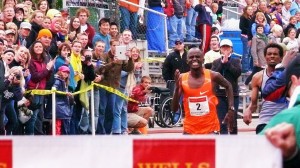
Two strides from the tape, Chris Kipyego, left, of Kenya strained to hold off Ethiopia's Teklu Deneke.
The 5-foot-6, 123-pound Kipyego recovered in an instant, but he had lost his momentum, while Deneke caught up. A photo taken two strides from the finish showed Deneke just behind Kipyego’s left elbow, but a photo shot just across the finish line showed them exactly side-by-side. In the photo finish, Kipyego’s left shoulder hit the banner and his left foot crossed the line just before Deneke by the slimmest of margins. Had the finish line been two strides farther, Deneke would have won.
Race director Scott Keenan chased after Kipyego to inform him he had won. It was his first victory in a U.S. marathon for Kipyego, who ran his fastest time. “I’m improving,” smiled Kipyego. “I did my best today, at 2:12:17. My best before was 2:12:56.”
Deneke was philosophical about coming so close. “I’m disappointed, but happy with second,” he said. “Only one person wins every race, and I thought I could win this one. You go to every race thinking you can win. We got down to four of us running together in the lead group, and everyone wants to win, so everyone picks up the pace. With one mile to go, I was still thinking of winning, and I was pushing hard the last mile. But I also know I did my best.”
Except for a brief stretch midway through the race, when American Jeff Eggleston, 26, of Flagstaff, Ariz., surprised a leading group of 10 East Africans by catching them from behind and taking the lead for about two miles, it was apparent that this would be another in what has become a traditional victory parade for runners from Kenya. Only Minnesota native Brian Raabe’s surprising victory two years ago broke a string of 15 consecutive triumphs by foreign runners, and 11 of those have been from Kenya.
In fact , Kipyego said “I knew about this race in Kenya before I came here,” noting that Grandma’s is known as a race in the United States that welcomes Kenyan runners. Seven of the 10 runners who led most of the race were from Kenya, and the other three from Ethiopia. The neighboring East African nations have a culture of running distances as the most logical mode of transportation, outside the towns, and while they are rivals, they are friendly and respectful rivals, although Kipyago hadn’t met Deneke until Friday night, at the Radisson Hotel.
“Yesterday, I talked to this guy at the hotel, and he’s a good guy,” said Kipyego, who now splits his time residing with his wife and young son between Kenya and Mexico. “I didn’t know how good he was, and I was surprised when he was in the lead group with us. We didn’t talk during the race.”
He said he’d learned something from each of his four previous attempts at Grandma’s Marathon. His learning reached a peak last year, when he was in the lead of a three-man cluster as they cruised down Superior Street. But when they got to Fifth Avenue West, where the course makes a 90-degree turn down the hill to the harbor, countryman Philemon Kemboi made a third-to-first pass and won, leaving Kipyego second. Kemboi ran into visa problems and was unable to return to defend his title, which may have boosted Kipyego’s confidence.
“This is my fifth Grandma’s, and I know the course,” he said. “My first time here, it was too hot, and I crashed — I collapsed at the finish line. I improved my time in my second Grandma’s, but last year I didn’t improve, so I changed my training a little, and I was more careful in the race.”
The race started near Two Harbors in rainy, dreary conditions, and temperatures didn’t climb as high as 50 until the race was over. The rain subsided, but conditions were less than ideal for the spectators who annually line Highway 61 and London Road and Superior Streeet in Duluth. Nor were they favorable for the East African runners who prefer it much hotter. The cool weather prompted better times and more endurance from many of the runners, but not all of them.
“This was too cold,” Kipyego said, with a smile, as he tugged on the skin on his wrist. “I’m too thin. I had to run the first hour and a half just to get warm.”
After Eggleston caught the leaders at Mile 18, he was unable to sustain his impressive pace and eventually took fifth. But Eggleston, who finished second in the Twin Cities Marathon two years ago, had an impact on the lead group, which quickened its pace. Sammy Malakwen, another Kenya runner, who placed third, moved ahead as the leaders neared Lemon Drop Hill, at 27th Avenue East and London Road, although he couldn’t pull away from Kipyego and Deneke.
“A different guy would come up and push, which was really good,” said Malakwen. “I started to take the lead on London Road, and I tried to push, push, push. But when I came up the hill, I could feel my muscles tightening. When we came under the bridge for the last stretch, I was 50 meters behind the two leaders. By that time, I was so exhausted and my muscles were cramping, so I knew I had no chance to win. But I had a good view of their finish.”
Kipyego and Malakwen both list Eldoret as their home city in Kenya, and Kipyego said many runners go to Eldoret to train. Kipyego, who won the $10,000 first-place money as well as $1,500 in incentive money from his sub-2:13 time, returned to Zacatecas, Mexico, the day after the marathon, just in time for his son’s third birthday. He said he spends about three months in Mexico, then returns to Kenya to live and train for about three months, where his mother lives on a farm.
“It is our culture to be born not in town,” he said.
It also is Kenya’s culture to run. Kipyego said when he was younger, he ran other track events. “I used to run 800 meters in Kenya, and my best time was a 1:48 when I was 19,” he said. “I ran 3:43 in the 1500, and 3:59 in the mile.”
I asked Kipyego if he had ever run a 200-meter dash, and he said no. I suggested that might have been good practice, because the closest finish in Grandma’s Marathon came down to a 200-meter sprint. He laughed, and agreed. With a little more practice, he could execute his closing 200-meter sprint without the hesitation near the finish line. You’ve heard of “false starts,” but Kipyego won after a “false finish.”
DELELECHA WINS WOMEN’S CROWN
Yihunlish Bekele Delelecha, 29, from Ethiopia, had less drama winning the women’s division by almost a full minute, with a 2:30:39 time to runnerup Everlyne Lagat’s 2:31:32. A group of three women runners pulled ahead of their challengers, but Delelecha got away and won handily over Lagat and third-place Dot McMahan, from Rochester Hills, Mich.
“We were in a group of three at about 19 miles, and then I tried to pull ahead,” said Delelecha, deciding on the move when she suspected her rivals were tiring. “I heard their breath, and that gave me confidence. After I got ahead, I looked back and my lead was about 50 meters. I changed my pace several times. I’d look back, and if I thought anyone was getting closer, I could go faster.”
When asked if anyone ever got close enough to make her speed up, Delelecha smiled and shook her head. She said she spends some time in Washington, D.C., but for nine months she lives in Albuquerque, N.M., “because the weather is similar to Ethiopia.”
The weather along the North Shore Saturday definitely was not similar to the heat of Ethiopia. “It is much cooler here, but good for running,” said Delelecha, who has run, and won, only two marathons this year — Pittsburgh and Grandma’s.
NOTES:Â Eggleston, who was fifth, and sixth-place Matthew Gabrielson of St. Louis Park were the top U.S. runners in the men’s marathon…Third-place Dot McMahan, a Wisconsin native whose parents live in Aitkin, was the top U.S. women’s finisher, and Jennifer Houck, from Wright, and a former St. Scholastica runner now living in Bloomington, placed fifth as the top Minnesotan.
While nobody threatened Dick Beardsley’s 30-year-old record of 2:09 for the full marathon, the top eight finishers in the men’s Garry Bjorklund Half-Marathon were under the 2002 record. Derese Deniboba Rashaw won in 1:02:19, starting the day of close finishes by narrowly edging Tesfaye Alemayehu, who clocked 1:02:22, and third-place Fernando Cabada, at 1:02:32. The old record was 1:04:19, set by Ryan Meissen.
Saul Mendoza, of Wimberly, Texas, won his second straight wheelchair marathon and seventh altogether, but never had a closer call than Saturday, when his 1:28:53.4 inched ahead of runner-up Jorge Jimenez, from Spain, who was a half-second back at 1:28:53.9. Mendoza looked a little like an auto racer at the finish as he inched ahead of Jimenez and then sort of casually wheeled over in an effective blocking position to the finish…Amanda McGrory, 25, of Champaign, Ill., won her fifth Grandma’s female wheelchair class in the last six years and shattered her course record by nearly seven seconds. McGrory, who won four straight before not competing in last year’s Grandma’s, clocked a 1:39:30 to erase the record she set in 2007 at 1:46:29.
A7 raises Audi standards for style, tech
By John Gilbert
Audi is unquestionably at the top rung of automotive styling as well as technology, and now Audi would like to stand out in U.S. sales, in a manner that might better reflect the popularity the brand enjoys throughout the rest of the world. If that’s an aggressive posture, Audi is deploying a new star player — the dramatically styled A7.
The “four-door coupe” look has been tried by many automakers, but it is a departure for Audi, and at first blush it would appear to be highly successful in execution. And Audi officials are not about to apologize for the departure. Brand Manager Scott Keough said, “The A7 is a boldly designed car, which deserves a boldly designed world,” then he pointed to a new ad campaign, which alerts all: “Let this be a warning to eyesores everywhere.”
Once a distant pursuer of German rivals from Mercedes and BMW, Audi has generally taken the conservative styling route, coupled with advanced technology, as it has evolved to a stronger competitive position in recent years. The look of Audi’s entire fleet sets the company apart, and distinctive styling is an Audi trademark, from its most compact A3 and on through the A4 and A6 to the luxury A8, as well as setting apart its Q7 and Q5 SUVs, and its sports cars, which range from the TT runabouts to the near-exotic R8 mid-engine classic.
The A7, however, sets a new plateau for Audi. It might be the most beautifully designed sedan ever built by Audi, with an aggressive nose that, we’re told, borrows heavily from the upcoming redesigned A6, which will ride on the same platform. But from the side, the A7 has a sweeping, coupe-like slope to the silhouette that tapers down in near-sports car fashion. At $59,250, it is priced just about the same as an A6, but well below the all-aluminum A8 flagship.
When the car was introduced, at the New York Auto Show in April, it looked very good sitting there on a pedestal, appearing to be similar in size to the midsize A6 but with a far more sporty flair. Recently, I’ve had the opportunity to drive and live with an A7 for a week, and it leaves no doubt that as good as it looks, the A7 performs with the hottest cars Audi has turned out.
For over a decade, Audi produced some exceptional small but overachieving engines for its smaller sedans and sporty cars, and whenever the company wanted to make a hot performer, such as the S4, S6 or others, it dabbled in turbocharging but primarily just stuffed the 4.2 liter V8 from the big A8 into smaller platforms with rousing performance results. The A7 represents a different approach, because lurking under that sleek hood is a 3.0-liter V6, bolstered by supercharging to develop 310 horsepower with 325 foot-pounds of torque. That’s easily enough to launch the quattro all-wheel-drive A7 in a truly sporting manner, and the 8-speed Tiptronic transmission guarantees it will continue in that sporty manner with instantaneous and smooth shifts, either up or down.
Audi has frequently used turbocharging to extract more power from, say, its 2.0-liter 4-cylinder, an engine that has widespread use throughout the Audi line and also powering parent Volkswagen’s GTI Golf, GLI Jetta, new Passat, CC sedan and Tiguan SUV. While a turbo takes exhaust flow and redirects it to run a turbine wheel that blows an increased fuel-air flow into the engine, a supercharger is run directly off an accessory drive and blasts air and fuel with direct suddenness into the engine.
The easiest explanation is to climb behind the wheel of any turbocharged Audi and, after being impressed with the building power at your command, then try the A7. Step on it hard, and you are instantly pressed against the seatback, as the car surges forward. You want to pass somebody? Hit the gas and you’ve leaped past.
To my surprise, while I only had a week to appreciate the blasts of power, which made it too tempting to pass up, it was also so efficient that we topped 30 miles per gallon in strictly freeway driving, and 27 or so was easily done overall.
The 3.0 supercharged V6 makes the A7 feel like a smaller and agile sport sedan, responding to throttle and steering inputs and benefitting from a sophisticated suspension system and, of course, Audi’s legendary quattro all-wheel drive system. The A6, according to Audi president Johan de Nysschen, is already outselling the Mercedes E-Class and BMW 5-Series sedans in Europe and Asia. The A6 fits nicely in the midsize segment and the A8 does the same in the luxury class, “and the A7 will appeal to buyers in both segments,” de Nyusschen said.
One of the challenges in the U.S. is that the A4 has been a solid leader for Audi, while its more luxurious upscale nameplates have been flourishing elsewhere. “We want to shift owners upmarket from their A4s,” de Nysschen added, “and while we pride ourselves on the drivetrain, the thing about the A7 that gets everybody is the emotional content of the car. It’s the kind of car that causes people to stop and look. It stands out from the crowd, but fits perfectly in our portfolio.”
In the midsize “C” segment, the A7 brings many of the high-end features from the A8, and it begs to have its technical sophistication described as much as its styling and performance. The styling is set off by what chief designer Ulrich Beierlein described as “two elegant lines, one sweeping up to the roof, and the other to the rear decklid.” The top line angles up near the “C” pillar, at the back of the cabin, to amplify the sloping roof in what is a new angular look for Audi.
“It was like thinking with your pencil, on a clean sheet of paper,” said Beierlein. “I was thinking of a gran turismo coupe, and the two horizontal lines accelerate from front to rear. It creates the elegant look of a coupe, and then uyou realize it’s a four-door coupe.”
The idea of the two crease lines continues inside, where the dashboard has two sweeping lines that angle the instruments to the driver. Mercedes started the idea of a four-door coupe with the previous generation CLS. Since then, Volkswagen successfully tried it with the CC sedan, and Jaguar, Acura and BMW have made stylish attempts to follow that lead. Interesting that as the A7 design was being readied for production, Mercedes renovated the CLS, and the new car is an impressive luxury car, but its side contours and overall silhouette abandon the four-door-coupe look that its predecessor made so striking.
If Audi inherits the leading-edge of that look, the A7 also sets new standards for electronic connectivity. The emotional impact Audi officials talk about is a combination of various technical features and real-world pampering. The fine leather and classy wood interior has an aura of quality and sportiness, sort of like settling into some friend’s high-buck sofa in his just-completed den. Only you’re in charge of this one. A screen rises to display navigation, maps, all sorts of information, and a heads-up display superimposed on the windshield just below your line of vision provides easy access to speed, fuel and other necessary information.
The MMI system offers touchpad controls, and the navigation is arranged through a partnership with Google Earth, with Wikipedia, weather, travel, and fuel prices all provided, as well as news headlines. In partnership with T-Mobile, the A7 becomes a rolling WiFi hotspot as well. Ford jumped ahead of everybody with its connectivity with Microsoft, Sony and others for its “Sync” system, but the competitors caught on quickly and are working their own arrangements.
For driver assistance, an infrared camera is used to create a night vision ability to see pedestrians ahead on a dark roadway, and Ultrasonic front sensors help the driver’s awareness of driveway obstacles and parking space room.
Some of the tech stuff fits well with what has become an Audi design trademark, such as the LED underline for the headlights, which are popular as daytime running lights, and the A7 goes a step further, bringing over the full-LED headlights of the A8.
The solid feel of the luxury A8 also permeates the A7 driving experience. Back in 1994, Audi revised the A8 into an all-aluminum masterpiece, with its aluminum body, platform, engine, suspension parts, and V8 engine, it was built like a jet aircraft, hundreds of pounds lighter than the same car would have been in steel, even with the added weight of quattro. The A7 uses a lot of high-strength aluminum, blended with steel, and when you slam the door, you definitely get the feeling of solidity.
With the torque fluctuating among all four wheels via quattro, the car starts out feeling more securely planted. A suspension system that combines a five-link front with trapezoidal-link rear, and designed to separate the shock absorbers from the suspension, make it feel even more stable, but never harsh while it holds its flat attitude in cornering. Electromechanical power steering is precise, and offers more feel than most electric power-steering units. It also saves 35 pounds of weight compared to a normal mechanical steering setup.
The A7 seems perfectly timed as well as well positioned to bolster Audi’s popularity. Audi vehicles ranked as seventh on the list of cross-shopped luxury sedans in 2006, and now they are No. 2 in the luxury segment. In recent months, Audi has increased sales at the rate that has doubled its market share.
All part of the plan, said brand manager Keough. “Audis have always seemed to be quiet, intellectual, and somewhat unknown,” he said. “If we want to be the best, we must also become ‘known.’Â People purchase luxury items to get something better than the normal, and the same holds true for luxury cars.”
Audis always have set standards that are a little bit different from the norm, and the new A7 could be a lightning rod to carry that concept to new heights.


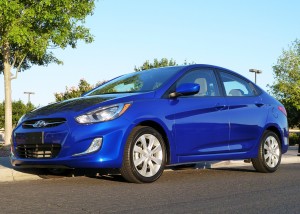
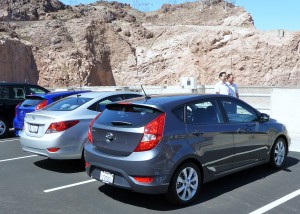
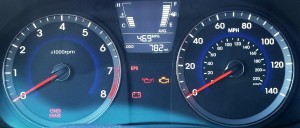
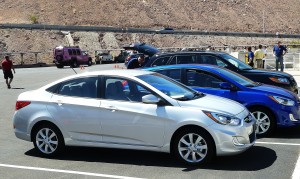
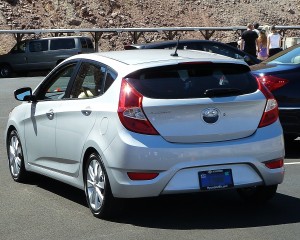
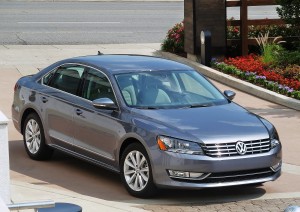
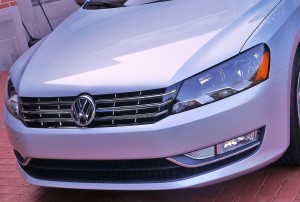
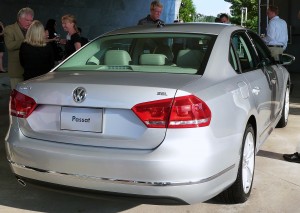
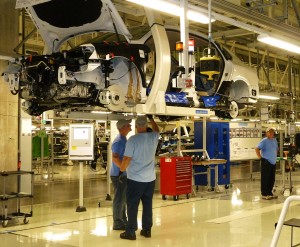
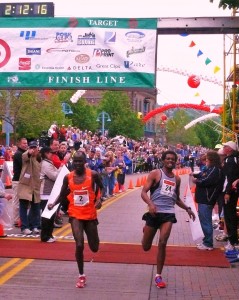

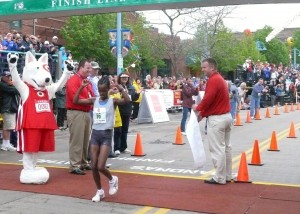
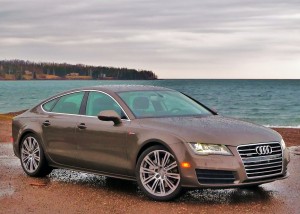
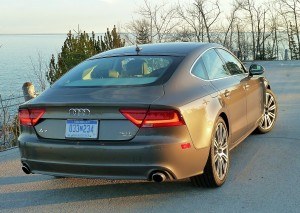
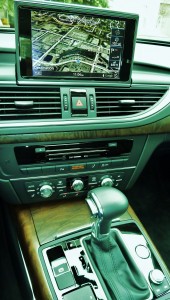
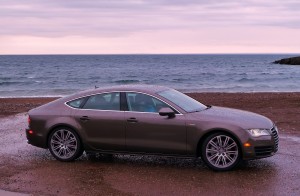
 John Gilbert is a lifetime Minnesotan and career journalist, specializing in cars and sports during and since spending 30 years at the Minneapolis Tribune, now the Star Tribune. More recently, he has continued translating the high-tech world of autos and sharing his passionate insights as a freelance writer/photographer/broadcaster. A member of the prestigious North American Car and Truck of the Year jury since 1993. John can be heard Monday-Friday from 9-11am on 610 KDAL(www.kdal610.com) on the "John Gilbert Show," and writes a column in the Duluth Reader.
John Gilbert is a lifetime Minnesotan and career journalist, specializing in cars and sports during and since spending 30 years at the Minneapolis Tribune, now the Star Tribune. More recently, he has continued translating the high-tech world of autos and sharing his passionate insights as a freelance writer/photographer/broadcaster. A member of the prestigious North American Car and Truck of the Year jury since 1993. John can be heard Monday-Friday from 9-11am on 610 KDAL(www.kdal610.com) on the "John Gilbert Show," and writes a column in the Duluth Reader.